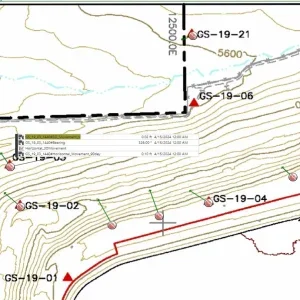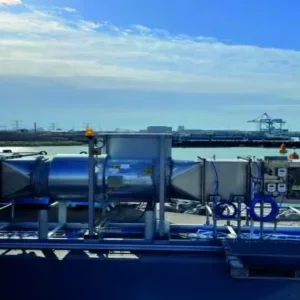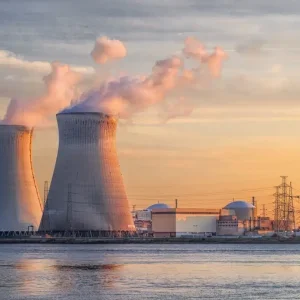
Global investments in renewable energy capacity increased in 2019 to surpass the previous year’s record, says a report.
Data recorded by BloombergNEF (BNEF), the media giant’s market research arm, highlights a late surge in offshore wind power as a key reason behind the jump in figures.
The company’s State of Clean Energy Investment report reveals world-leader China slipped back on investment in renewables over the past 12 months, while the US recorded record figures over the same period.
Head of wind research at BNEF Tom Harries added: “Offshore wind developers in China brought forward 15 projects to beat a scheduled expiry of that country’s feed-in tariff.
“We expect the sector’s global momentum to continue in 2020, with the focus on gigawatt-scale projects in the British North Sea and the first commercial arrays off the US east coast.”
How global renewable energy capacity investments increased in 2019
It is no surprise to see renewable energy capacity investments increase from $280.2bn in 2018 to $282.2bn over the past 12 months, as the world attempts to reduce its reliance on high-polluting fossil fuels and transition to cleaner energy sources.
BNEF’s report says the first few months of 2019 were relatively subdued before investments picked up across the second half of the year — largely put down to an increase in US onshore wind and offshore capacity in China and Europe.
It adds, the late surge in financing for projects at sea took capacity investment in that sector to $29.9bn, up 19% from 2018, and $2bn more than in the previous record year of 2016.

Among the offshore projects reaching financial close in the fourth quarter of 2019 were the 432 megawatts(MW) Neart na Gaoithe array off the coast of Scotland at $3.4bn, the 376MW Formosa II Miaoli project off Taiwan at $2bn, and the 500MW Fuzhou Changle C installation in the East China Sea, at $1.5bn.
France’s first-ever offshore wind farm — off the west coast city of Saint Nazaire — got the financial go-ahead in the third quarter, with the 480MW field valued at $2.5bn.
Which renewable energy sources had the biggest capacity jumps in 2019?
The overall renewable energy capacity investment figures for 2019 in onshore and offshore wind led the way with $138.2bn globally, up 6% from the previous year, according to BNEF.
Although solar was not too far behind at $131.1bn, capacity investment took a 3% hit over the past 12 months.
The report claims falling capital costs in wind and solar meant the two combined are likely to have had around 180 gigawatts (GW) added last year, a rise of about 20GW on 2018.
It adds that biomass and waste-to-energy experienced a 9% rise in capacity investment in 2019 at $9.7bn, while geothermal suffered a huge 56% financing hit down to $1bn.
Biofuels were also down 43% at an estimated $500m, with small hydro 3% lower at $1.7bn.
Which countries invested the most in renewable energy capacity in 2019?
China remained the biggest investor in renewables at $83.4bn in 2019, but that’s an 8% drop on its 2018 figures and the lowest since 2013.
The country had a 10% rise in wind investment to $55bn, although solar fell by 33% to $25.7bn, which is less than a third of the total it reached in 2017.
The US was the second-largest investor in renewable energy capacity at $55.5bn, up 28% on 2018 fig.
The report says a key part of this was a rush by wind and solar developers to qualify for federal tax credits that were due for scale-back this year.
Head of Americas for BNEF Ethan Zindler highlighted that it is notable that in this third year of Donald Trump’s presidency, which he says has not been particularly supportive of renewables, US clean energy investment set a new record by a “country mile”.
“These technologies are more cost-competitive than ever, and the fact that there was a tax credit step-down on the horizon made the market particularly busy in 2019,” he added.

European investments dropped behind the US last year at $54.3bn, a 7% decline.
Spain increased its financing for clean energy capacity by 25% from 2018 figures, to lead the way with $8.4bn — the highest annual figure for the country since 2011.
Senior associate for solar at BNEF Pietro Radoia said there had been a $6bn increase of solar investment in Spain over the past 12 months.
“This is impressive because these projects are going ahead at record-low costs per megawatt,” he added.
“Developers are building PV parks on the back of low tariffs agreed in government-run auctions or, increasingly, without any subsidy support at all.”
The UK invested $5.3bn in renewable energy capacity, down 40% and its lowest since 2007.
Germany experienced its lowest figures since 2004, after dropping 30% to $4.4bn.
Elsewhere, Sweden was down 19% at $3.7bn, but the Netherlands was up 25% at $5.5bn, France 3% higher at $4.4bn, and Ukraine’s total was up 56% to $3.4bn.
In Asia, Japan invested $16.5bn in renewable capacity last year, which BNEF says was mainly solar, but that is a 10% drop on its 2018 total.
Australia experienced a 40% drop to $5.6bn, while India committed $9.3bn into green energy — 14% less than in 2018.
The United Arab Emirates invested a record $4.5bn, with almost all of it for the 950MW Al Maktoum IV solar thermal and photovoltaic complex in Dubai.
In Latin America, Brazil’s renewable energy capacity investment increased by 74% to $6.5bn in 2019, while uresMexico commitment rose 17% to $4.3bn.
Chile’s financing for clean energy experienced four times as much funding to $4.9bn, and Argentina was down 18% to $2bn.






